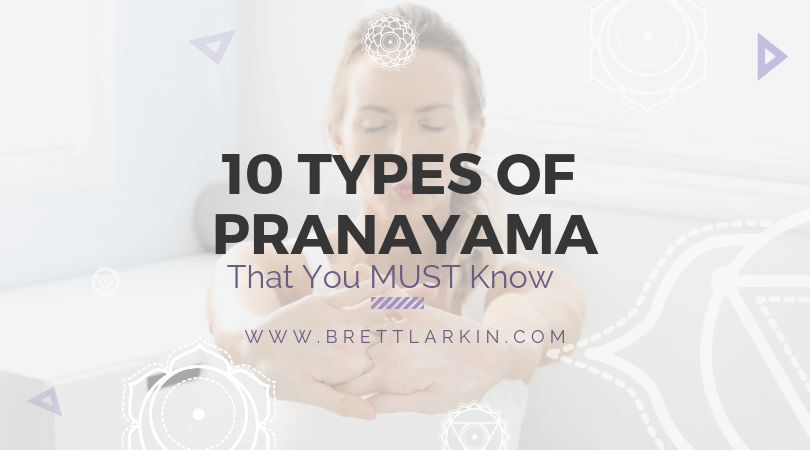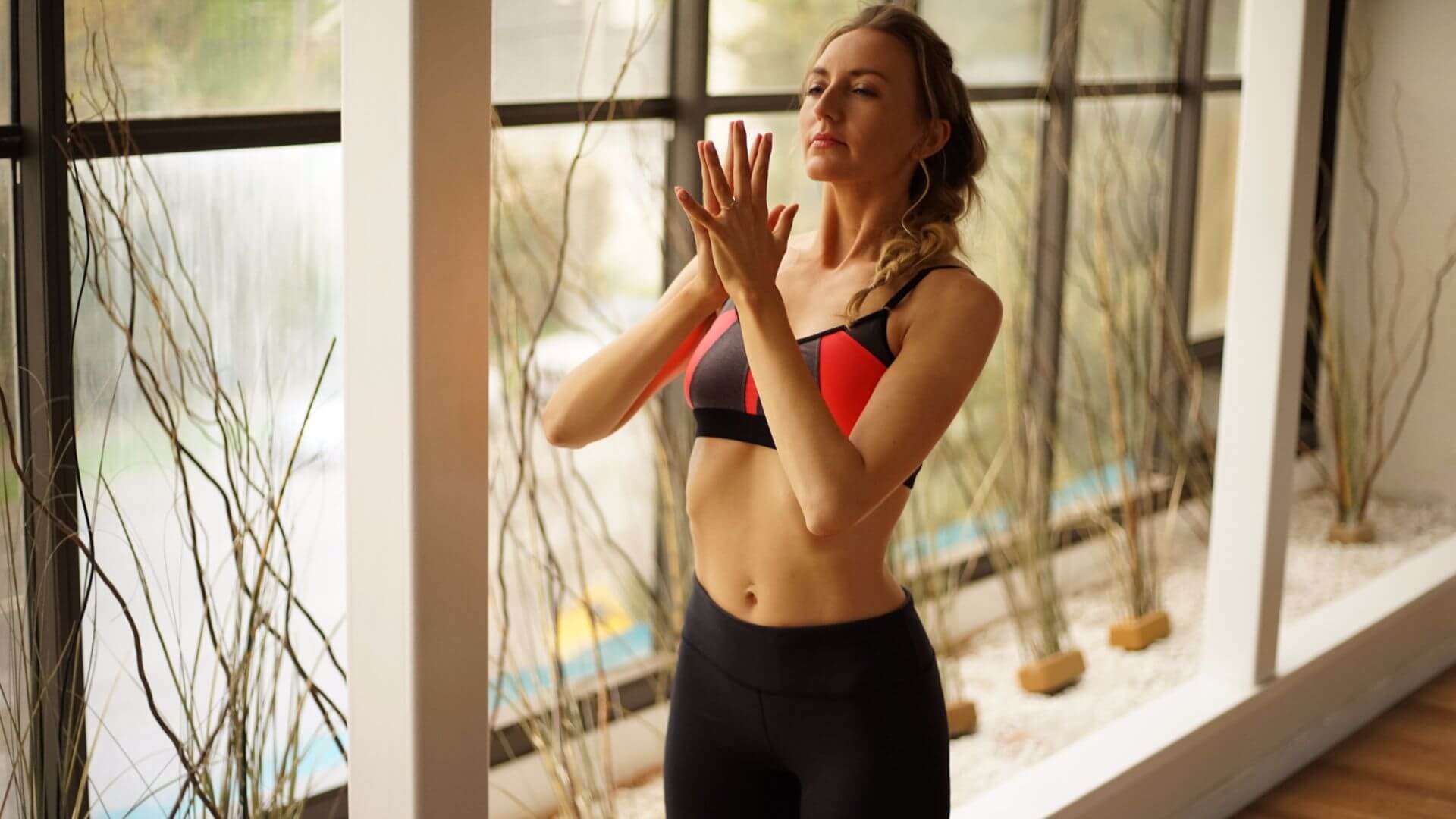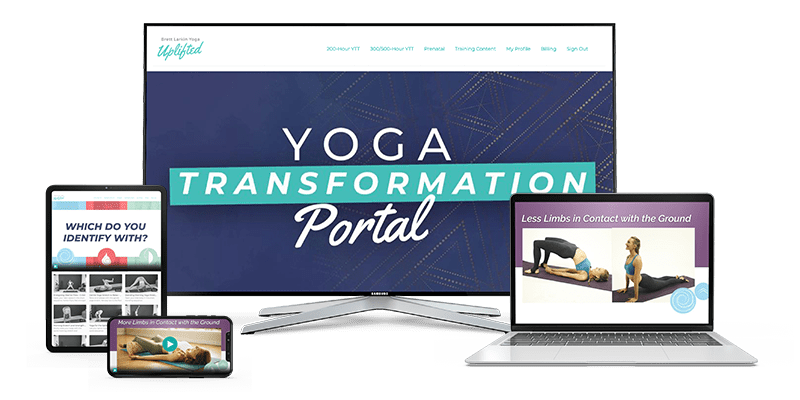
Breathing is part of our autonomic nervous system, the very basis by which our bodies survive…
…so obviously we know it’s important. But many people might not know just how powerful it can be.
The very act of inhalation and exhalation can help control your blood pressure, calm stress-related disorders, and bring you to the present moment with laser-sharp focus. Some breath practices are calming, others help to develop your lung capacity, and some stimulate your nervous system.
Without knowing the science behind it, ancient yogis learned to harness the power of the breath and developed an entire way of yogic breathing. In fact, they found the breath to be so important that they named it as one of the eight limbs of yoga. Many yoga teachers I’ve talked to consider pranayama to be THE most important aspect of yoga. The asanas should actually be secondary to the breath.
While pranayama is a powerful tool that is often overlooked in westernized yoga studios and classes, these ancient breathing techniques can easily be incorporated into your practice. In this post, I’ll go over the many different pranayama types, like Ujjayi breathing, as well as the pranayama benefits that you can expect from them.
I’m so excited to share this with you 🙂 Let’s get started!
Where Does Pranayama Breathing Come From?
Pranayama is two Sanskrit words that loosely translate to ‘to control life force’. The first Sanskrit word is ‘prana’, meaning life force and the second is ‘yama’, meaning to restraint or control. So pranayama is typically defined as a set of practices used to control prana in the body by means of your breathing patterns, such as to hold your breath or to practice deep breathing.
Pranayama techniques date back to the origins of yoga that were introduced in ancient texts. This is said to be around 6th and 5th centuries BC. These texts, such as the Yoga Sutras, mention pranayama as foundational to the practice of yoga.
In fact, pranayama is one of the eight limbs of yoga, along with asanas (postures). Modern yoga tends to focus more on the postures, but the early texts rarely mention the asanas at all. Instead, ancient yoga focused on freeing the mind through the use of meditation and pranayama.
It’s only when yoga was brought to the west did it become a narrow focus on the physical asanas. A truly yogic lifestyle, however, includes these pranayama breathing techniques in daily life.
You might also like: What Are The Chakras and Kundalini Energy Flow? Here Is My Complete Breakdown.

What Are The Benefits of Pranayama?
Since prana energy is believed to be the driving force of all bodily functions, the benefits of pranayama exercises are vast. Traditional medicine of the East tends to link everything back to the flow of prana, or life force, within the body.
According to Eastern medicine, blockages in the flow of our vital energy can cause disease and illness. So, being able to control the flow can give you the power to heal and balance the body.
But if you’re more into Western medicine, then you’ll be happy to know that pranayama breathing techniques have been linked to health benefits in the western world, too.
In fact, breathing exercises can help calm the mind in our world of constant stimulation, leading to lower blood pressure and more stable mood.
How?
Deep breathing exercises stimulate the vagus nerve, which is the nerve that connects the brain to the body. It’s an important highway of information that allows the body and the brain to communicate. When we take a deep breath, it signals to the brain via the vagus nerve that we are getting too ramped up and need to calm down.
You Might Also Like: The 10 Bodies of Yoga and How to Activate Them
So our brain sends signals to calm the body down, like an all-natural blood pressure reducer. But for free and within a matter of minutes.
Simple breathing exercises can have a huge impact on our overall health and well-being. Here are a few of the benefits of pranayama:
- Improved cardiovascular health
- Reduced risk of hypertension
- Improved lung function
- Detoxification
- Strengthened immune system
- Improved mental concentration

The Three Phases of Pranayama Breathing
No matter how you practice breath control, there are essentially three stages of pranayama breathing. The three components to the breath are
- Purak (inhalation)
- Kumbhak (retention)
- Rechak (exhalation)
One yogic breathing technique, for example, might instruct that the inhaling and exhaling is done slowly with a pause in between. Another might instruct that the inhaling and exhaling are done rapidly without any pause in between.
No matter how long you hold your breath or how many seconds you take for each inhalation and exhalation, though, all types of pranayama will move through these three stages.
Make your yoga practice 2x more potent in HALF the time (usually $47) FREE 👇

Make your yoga practice 2x more potent in 1/2 the time. FREE two-hour Yoga Transformation Portal (usually $47) [Claim it Free Here]

10 Types of Pranayama Breathing (With Instructions)
Experts say that the best time to practice pranayama is early in the morning and on an empty stomach. Ideally, it would be practiced outdoors, but only if you live in a place with good air quality. Some will recommend these breathing exercises with different types of mudras while others will say to simply relax. Give each a try until you find what works for you.
1. Nadi Sodhana
Sometimes referred to as alternate nostril breathing, this breathing practice is great for balancing the energy in the body.
Start in a comfortable seated position. Use the right thumb to close the right nostril. Take a deep breath in through the left nostril. Imagine the breath traveling up through the left side of the body. Pause briefly.
Next, use the ring and pinky fingers of the right hand to close the left nostril as you release the right nostril. Exhale through the right nostril imagining the breath coming down the right side of the body. Pause at the bottom of the exhale.
Keeping the left nostril closed, inhale through the right nostril. Then, use the right thumb to close the right nostril as you release the left. Exhale through the left nostril and pause gently at the bottom of the exhale.
This completes one round. Repeat this alternating pattern for several more rounds, visualizing the breath coming in and out of the body.
2. Ujjayi Pranayama
I would say this pranayama is one of the most used in yoga classes today. It is the foundational breath used in the ashtanga vinyasa style of yoga.
The ujjayi breath is meant to mimic the sound of ocean waves. This rhythmic sound can help you focus your mind and link your movements to the sound of your breath.
Begin by breathing through the mouth. Constrict the back of the throat, as if you are trying to fog up a mirror. Next, close the mouth and continue to breathe through the nose with the throat still constricted.
The sound of the breath can keep the mind from wandering during meditative practices.
3. Kapalabhati Pranayama
You may also hear this pranayama referred to as ‘breath of fire’. The purpose of this breath is to build heat in the body and raise your vibrational energy in the pranic body. If you have ever been to a kundalini yoga class, you have most likely done this kapalabhati.
The easiest way to understand how to do this breath is to open your mouth and begin to pant like a dog. You will exhale forcefully and the inhale will come naturally. Focus on the exhalation.
Now, close your mouth and continue the breath through your nose. Imagine your diaphragm moving in and pushing the breath out.
This is a very powerful pranayama, so it may not be best for everyone. For example, if you are pregnant, menstruating, have high blood pressure or are recovering from a recent heart attack. In any special cases, it’s best to seek the advice of a medical professional first.
4. Bhramari Pranayama
When I was taught this technique, it was referred to as the ‘humming bee breath’. This gives you a good idea of what the breath should sound like.
In this pranayama, your eyes and ears will be closed. Use your thumbs to close the ears and the first two fingers to cover the eyes. Keeping the mouth closed, take a deep breath in. Then, exhale with a chant of ‘om’.
The humming sound and vibrations created by the chanting have a natural calming effect on the mind and body. Bhramari can be used to calm anxiety and relieve stress.
5. Sheetli Pranayama
Sit in a comfortable position. Close the eyes and relax the body. Put the tongue on the lower lip and make a roll with the tongue. Inhale deeply through the mouth. Hold the breath for as long as possible. Close the mouth and slowly exhale through the nose.
This is one round. You can start by doing 2-3 rounds of breath, and gradually make your way up to 15 rounds.
6. Bhastrika Pranayama
Otherwise known as the ‘bellows breath’ , this is very similar to kapalabhati. The main difference is that, with bhastrika, both the inhale and exhale are forceful.
Begin in a comfortable seated position. Take a deep breath in and breathe out forcefully. Immediately, breathe in with the same force. Inhale and exhale repeatedly, using the diaphragmatic muscles.
Do ten cycles of breath to complete one round. Continue for two more rounds, pausing in between rounds.
7. Viloma Pranayama
Viloma is a great pranayama for beginners. It can be done sitting or lying down.
Begin by inhaling to a third of the lungs capacity, then pause for two to three seconds. Inhale another third and pause again. Next, inhale until the lungs are filled. Pause briefly before repeating this pattern on the exhale.
This is a great pranayama that helps calm the mind and relax the nervous system.
8. Dirga Pranayama
Dirga is also referred to as the three-part breath because you are actively breathing into three different parts of the abdomen. This attention to the different parts of the body can help focus the mind.
You can do this exercise with sitting upright or lying on your back. I prefer lying down though. When you are lying on the ground, it’s easier to feel the breath moving through the different parts of your body.
Start by breathing into the belly and watch it expand with the breath. When the belly is full, draw in more breath expanding into the rib cage. Then, sip in just a little more air and let it fill the upper chest.
On the exhale, start from the upper chest. Release the breath allowing the heart center to sink back down. Then, release the breath from the rib cage. Finally, let the air go from the belly and draw the navel back towards the spine.
Continue at your own pace for about 10 breaths.
9. Chandra Bedha
The left side of the body is associated with lunar energy, so this technique has a cooling effect on the body.
Sit in a comfortable seated position with the back straight and shoulders relaxed. Close your right nostril with your right thumb and inhale through the left nostril. Then, close the left nostril with your right index and middle fingers and exhale from the right nostril.
This is one round. You can repeat for 10 – 20 rounds. Breathing through the left nostril stimulates the lunar energy which is cooling and calming in nature, so this is best to be done in the summer.
10. Surya Bedha
Also known as right nostril breathing, this pranayama stimulates the solar energy in the body which is warming and energizing.
Sit in a comfortable seated position with the back straight and shoulders relaxed. Close your left nostril with your right index and middle finger and inhale through the right nostril. Then, close the right nostril with your right thumb and exhale from the left nostril.
This is one round. You can repeat for 10 – 20 rounds.
Next Steps
- Check out my YouTube channel and find some yoga classes that you can try out for yourself!
- Download my Yoga Calendars for an at-home practice, guided by me on YouTube!
- Join Uplifted for exclusive content that you can access right from the app. Take a deep dive into your practice with me this year!
Experience 3 Training Videos from Inside My 200-Hour Online YTT

YOU MIGHT ALSO LIKE
- What is Kriya Yoga? The Philosophy and Practice
- Uddiyana Bandha: Tapping Into Your Deep Core
- 4 Reasons Hasta Bandha Is Essential To Your Yoga Practice
- Vitarka Mudra: What It Is and How Do You Use It?
- Shakti Mudra: What It Is and How Do You Do It?
- Garuda Mudra: What It Is and How Do You Use It?
- Kali Mudra: What It Is and How Do You Do It?
- Shunya Mudra: What It Is and How Do You Do It?
- Varuna Mudra: What It Is and How Do You Use It?
- Vayu Mudra: What It Is and How Do You Use It?
- Samana Vayu: The Energy of Balance & How to Access It
- Apana Vayu: The Energy of Release & Surrender
- Udana Vayu: The Ascending Wind
- Prana Vayu: The Breath of Vitality
- Vyana Vayu: The Energetic Secret to Flow








